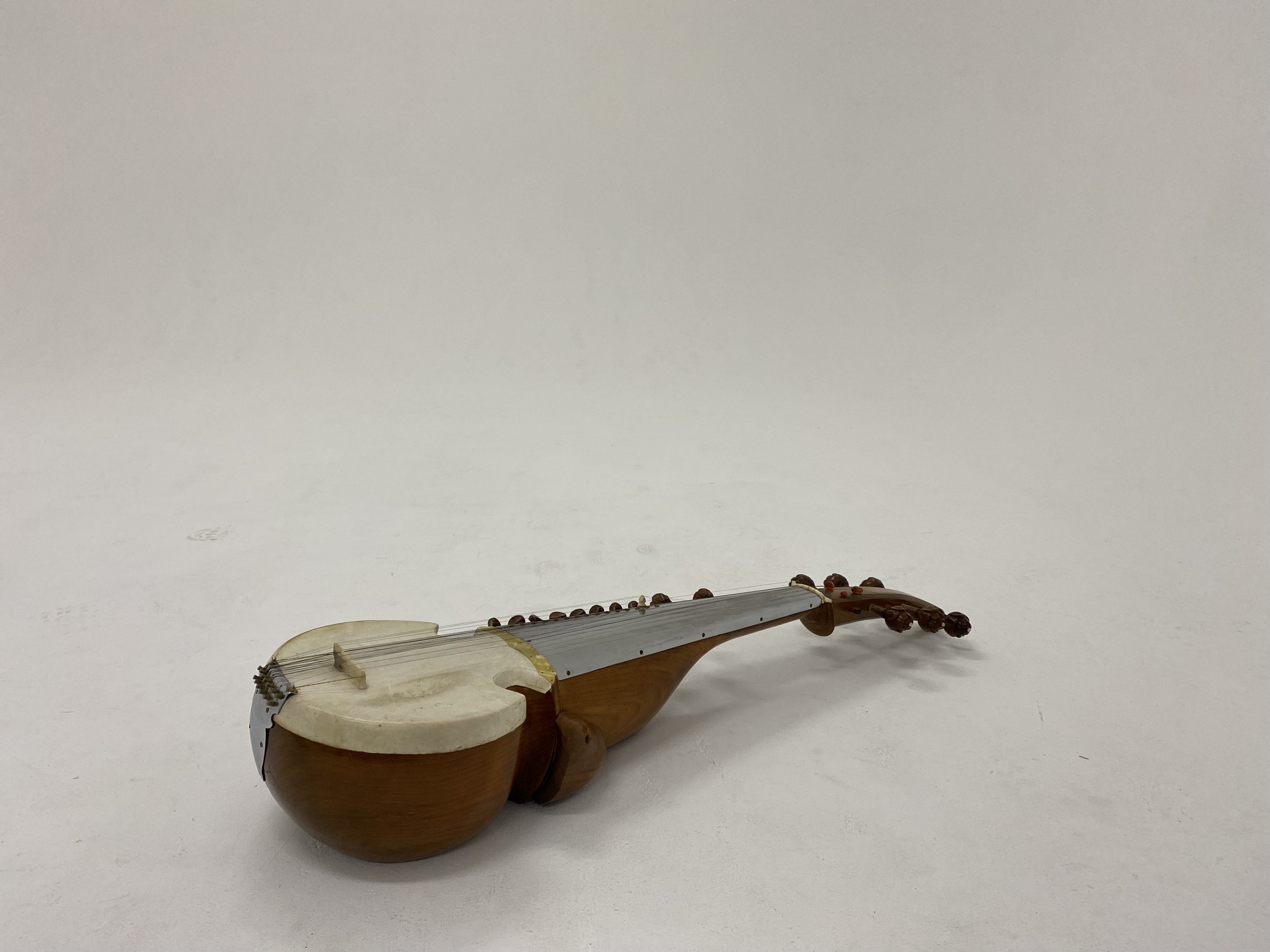
The History & Evolution of the Instrument
The Sarod
The history and evolution of the Sarod, a mesmerizing Indian musical instrument, is a captivating tale that spans centuries.
The word "sarod" finds its origins in the Persian language, stemming from "sorūd," meaning "song," "melody," or "hymn."
A Fusion of Instruments
Scholars widely believe that the Sarod is a fascinating fusion of several ancient and medieval musical instruments. It is said to incorporate various elements drawn from the chitravina, which is an ancient Indian instrument, the rabab (specifically, the seniya rabab), and the modern sursingar.
The instrument's precursor may have very well existed during the reign of the Gupta kings, as famously depicted on a Gupta period coin that features King Samudragupta himself playing a veena, highlighting the rich cultural history associated with this remarkable instrument.
Similar Rabab-style instruments can be found in southern India, known as the swarbat, particularly in Tamil Nadu, Kerala, and Karnataka.
The folk rabab, popular in North India, had a wooden fingerboard, silk, cotton, or gut strings, and was played with a wooden pick. Another probable ancestor of the sarod is the Afghan rubab from Central Asia and Afghanistan.
In the 20th century, the sarod saw significant improvements by the legendary Allauddin Khan and his brother Ayet Ali Khan.
They added more drone and sympathetic strings to enhance the overall richness and depth of sound. Additionally, a steel plate was thoughtfully added to the fingerboard to significantly assist players in utilizing gliding techniques that are commonly found in Indian classical music. Finally, the original catguard strings were replaced with either steel, bronze, or copper strings to provide a more versatile tonal range and improve the instrument's resonance.

The sarod's historical lineage is further enriched by the contributions of esteemed musicians and dedicated teachers throughout its evolution.
Next to the more widely known names in the west, such as Ustad Ali Akhbar Khan and Ustad Amjad Ali Khan, who significantly influenced various playing styles and techniques, there are others who have made impactful contributions.
Notably, it was Pandit Radhika Mohan Moitra and Pandit Buddhadev DasGupta, both revered sarod maestros in their own right, who also played a pivotal role in shaping the instrument's development and its place in classical music.
Their expertise and guidance were passed down to Sri Koustuv Ray, who carried the lineage forward through his teachings in Amsterdam. Sri Koustuv Ray, a master sarod player and vocalist, nurtured and mentored Avi Kishna, instilling in him a deep understanding and love for the instrument. Making Avi the first Surinamese Hindustani sarod player in The Netherlands.
The journey of the sarod continues, with ongoing exploration and refinement, reflecting the broader state of Indian instrument-making in the present day.
The historical lineage of remarkable musicians and the dedication of teachers have played a vital role in preserving and evolving the captivating art of playing the sarod.


